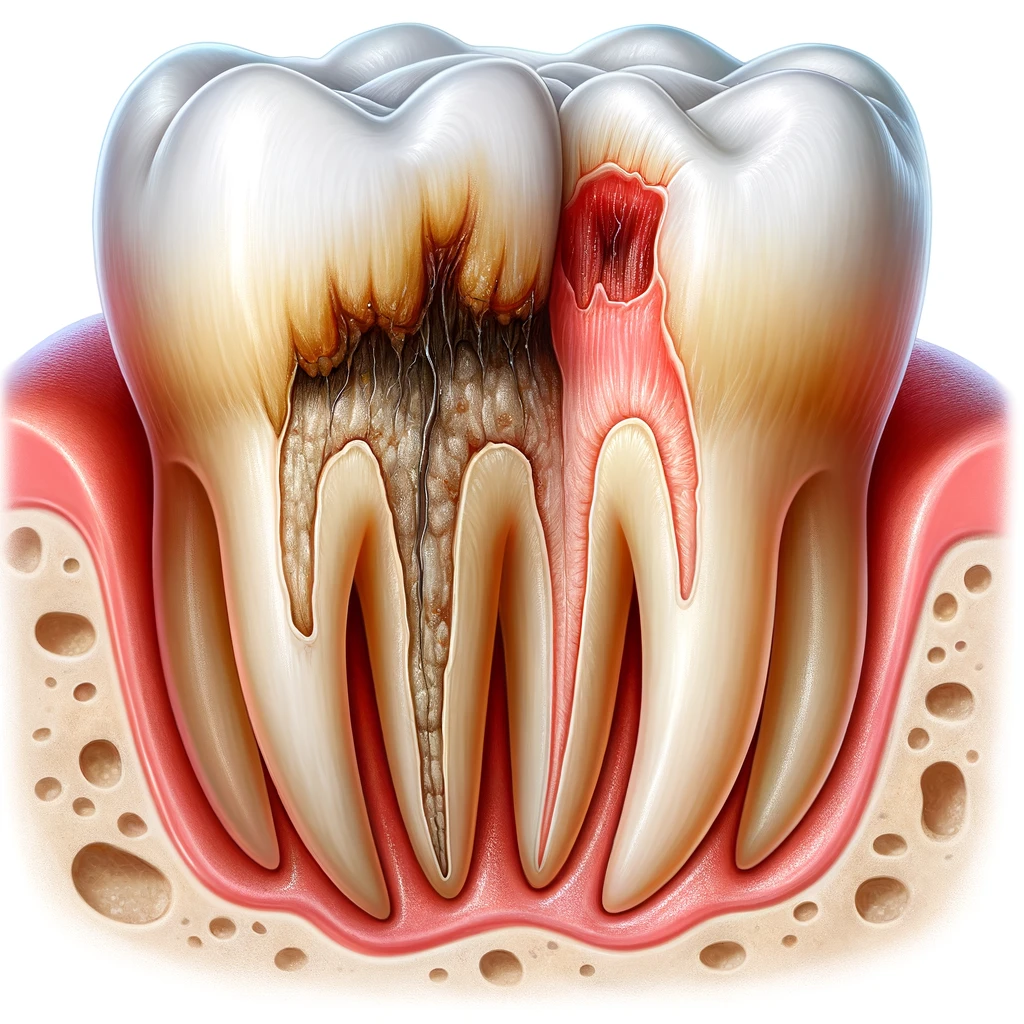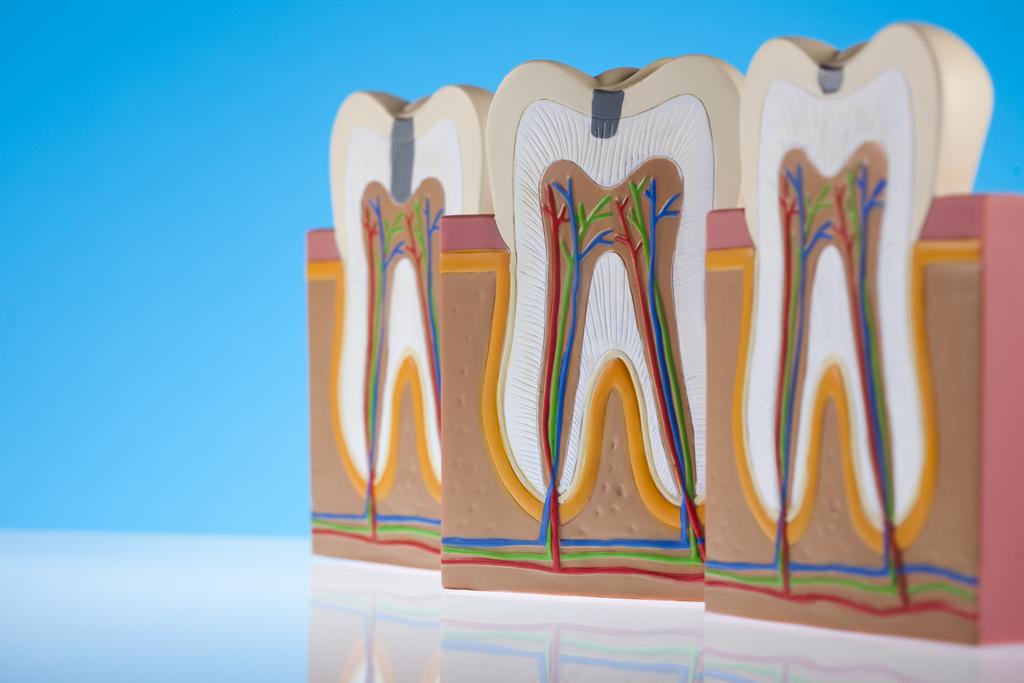Tooth infections are no joke. If you’ve ever had one, you know how painful and annoying they can be. But did you know that if left untreated, a tooth infection can actually be life threatening? We Explore into the nitty-gritty of tooth infections, their progression, potential complications, and how long it might take before a tooth infection becomes fatal. Don’t worry; we’ll keep it simple, engaging, and packed with useful information.

What is a Tooth Infection?

A tooth infection, also known as a dental abscess, occurs when bacteria invade the dental pulp the innermost part of the tooth that contains blood vessels, nerves, and connective tissue. This can happen due to untreated cavities, cracked teeth, or gum disease. Once bacteria reach the pulp, they multiply and cause an infection, leading to an abscess, which is a pocket of pus.
Causes of Tooth Infections

Tooth infections are typically caused by:
- Poor dental hygiene, which allows bacteria to build up on teeth and gums.
- Consuming sugary or acidic foods and drinks that contribute to tooth decay.
- Dental trauma that causes cracks or breaks in the teeth.
- Existing dental conditions like cavities or gum disease that go untreated.
Symptoms of Tooth Infections

The symptoms of a tooth infection can vary but often include:
- Severe, throbbing toothache
- Sensitivity to hot and cold temperatures
- Swelling in the face or cheek
- Tender, swollen lymph nodes under the jaw or in the neck
- Fever
- Difficulty swallowing or breathing (in severe cases)
The Progression of a Tooth Infection

1: Initial Stage – Localized Infection
At the onset, the infection is typically confined to the tooth. You might notice a persistent toothache, swelling, and possibly a bad taste in your mouth if the abscess ruptures. At this stage, prompt dental treatment can usually resolve the issue without further complications.
2: Intermediate Stage – Spread to Surrounding Areas
If left untreated, the infection can spread to the surrounding gum tissue and bone. You might experience increased pain, more significant swelling, and redness in the affected area. The infection can also begin to impact your overall health, causing fever and malaise.
3: Advanced Stage – Systemic Infection
In the most severe cases, the infection can spread beyond the mouth and into the bloodstream, leading to sepsis a life-threatening condition. Symptoms of sepsis include a high fever, rapid heartbeat, rapid breathing, and confusion. This stage requires immediate medical attention.
Potential Complications of Untreated Tooth Infections

Abscess Formation
An abscess is a pocket of pus that forms in response to infection. While it can drain on its own, this isn’t a cure and the infection can persist and spread.
Sepsis
Sepsis is a serious complication that occurs when the infection spreads into the bloodstream, triggering a widespread inflammatory response. It can lead to tissue damage, organ failure, and death if not treated promptly.
Bone Infection (Osteomyelitis)
Osteomyelitis occurs when the infection spreads to the bones, leading to severe pain, fever, and swelling. This condition requires aggressive treatment, often involving antibiotics and surgery.
Ludwig’s Angina
This is a type of cellulitis that occurs in the floor of the mouth, under the tongue. It can cause severe swelling, making it difficult to breathe and swallow. Ludwig’s angina is a medical emergency that requires immediate treatment.
Cavernous Sinus Thrombosis
This rare but serious condition occurs when an infection spreads to the cavernous sinus, a large vein at the base of the brain. It can cause severe headaches, fever, and eye problems, and can be life-threatening without prompt treatment.
How Long Until a Tooth Infection Becomes Life-Threatening?

Factors Influencing the Timeline
The timeline for a tooth infection to become life-threatening can vary widely based on several factors:
- The individual’s overall health: People with weakened immune systems, such as those with diabetes or undergoing chemotherapy, are at higher risk for rapid progression.
- The location of the infection: Infections in the lower teeth or near critical structures like the sinuses can spread more quickly.
- Promptness of treatment: Early treatment can prevent complications, while delays can allow the infection to worsen.
Case Studies and Real Examples of Tooth Infections

Consider the case of John, a 45-year-old man who ignored a persistent toothache for weeks. By the time he sought help, the infection had spread to his jawbone and bloodstream, leading to sepsis. Despite aggressive treatment, John faced a prolonged hospital stay and a slow recovery. His story highlights the importance of addressing dental issues promptly.
Diagnosis and Treatment of Tooth Infections
Diagnostic Procedures
Diagnosing a tooth infection involves a thorough dental examination, including:
- Visual inspection to check for visible signs of infection.
- Tapping on the teeth to identify the infected tooth.
- X-rays to determine the extent of the infection and whether it has spread to surrounding areas.
Tooth Infection Treatment Options

Antibiotics
Antibiotics are often prescribed to help control the infection. However, they are not a standalone treatment and should be used in conjunction with other procedures.
Drainage of Abscess
If an abscess is present, your dentist might need to drain it. This can be done through a small incision in the gum or by drilling a hole in the infected tooth to allow the pus to escape.
Root Canal Treatment
A root canal involves removing the infected dental pulp, cleaning the inside of the tooth, and sealing it to prevent further infection. This can save the tooth from extraction.
Tooth Extraction
In cases where the tooth cannot be saved, extraction might be necessary. This prevents the spread of infection and alleviates pain.
Preventing Tooth Infections Maintaining

Good Oral Hygiene Practices
Maintaining good oral hygiene is the best way to prevent tooth infections. This includes:
- Brushing your teeth twice a day with fluoride toothpaste.
- Flossing daily to remove food particles and plaque from between your teeth.
- Using an antiseptic mouthwash to kill bacteria.
Regular Dental Check-ups
Regular dental check ups allow your dentist to identify and treat potential problems before they become serious. Aim to visit your dentist at least twice a year.
Diet and Lifestyle Choices
A healthy diet and lifestyle can also help prevent tooth infections. Limit sugary and acidic foods and drinks, avoid tobacco, and ensure you’re getting enough vitamins and minerals to keep your teeth and gums healthy.
Conclusion
Tooth infections are more than just a painful inconvenience. They can escalate to serious, life threatening conditions if not treated promptly. Understanding the symptoms, progression, and potential complications can help you take action before it’s too late. Remember, good oral hygiene and regular dental visits are your best defense against tooth infections.
FAQs – How Long Until a Tooth Infection Kills You
Q1: How can I tell if my tooth infection is serious?
Answer: If you experience severe pain, swelling, fever, or difficulty swallowing or breathing, seek medical attention immediately. These could be signs of a serious infection.
Q2: Can a tooth infection go away on its own?
Answer: No, a tooth infection will not go away on its own and requires treatment to prevent it from spreading and causing further complications.
Q3: How can I prevent a tooth infection?
Answer: Good oral hygiene, regular dental check-ups, and a healthy diet are key to preventing tooth infections. Avoiding sugary foods and quitting smoking can also help.

